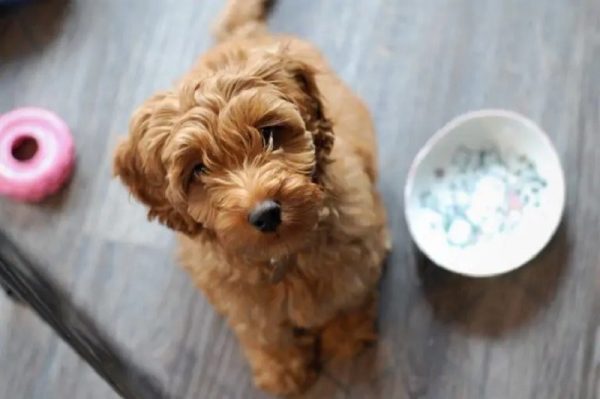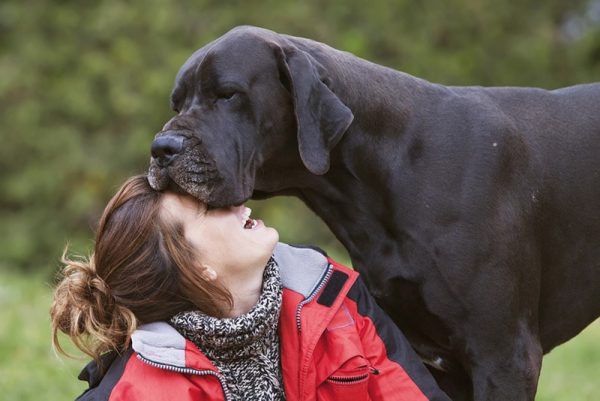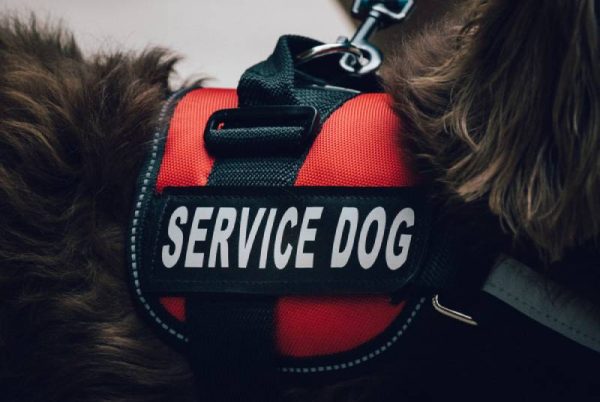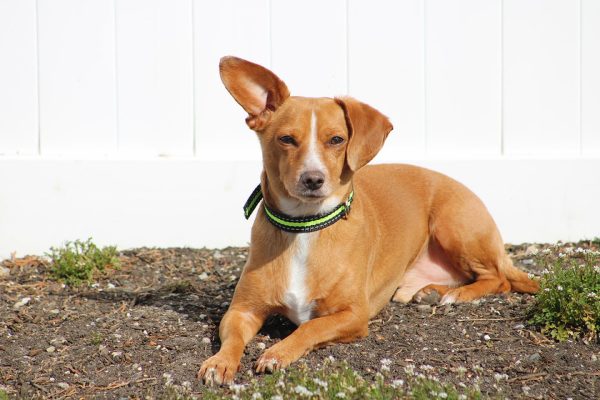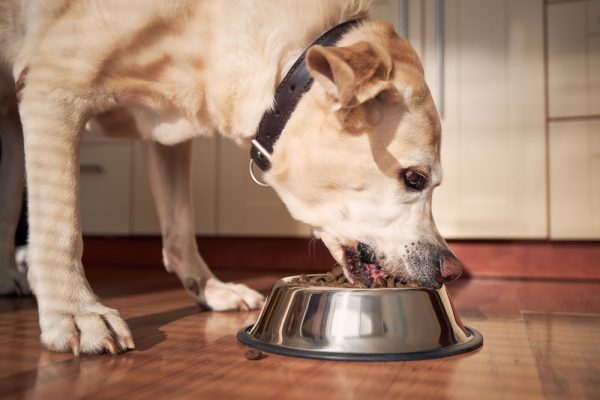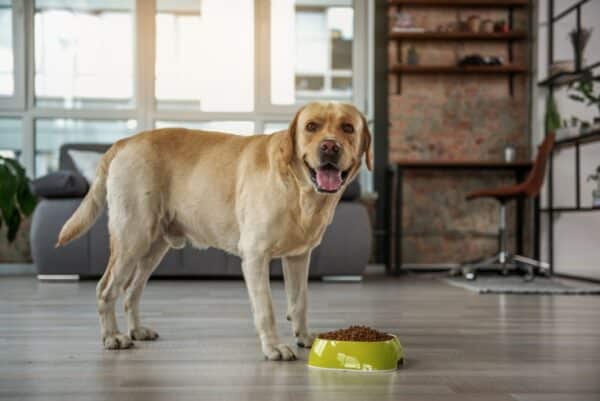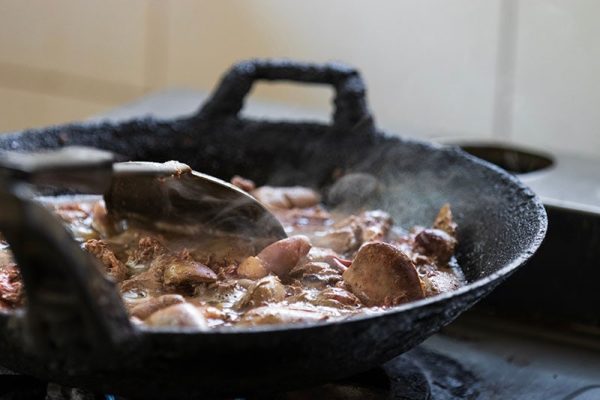In this article
View 3 More +When considering a dog that will protect you, your family, and your home, there are several options. Two of the most popular are the Doberman and Belgian Malinois. While these dogs may be at the top of the list regarding protection, there is more than meets the eye. We’ll examine the muscular and respected Doberman and the hard-working Belgian Malinois so you can decide which breed is best suited for you.

Visual Differences
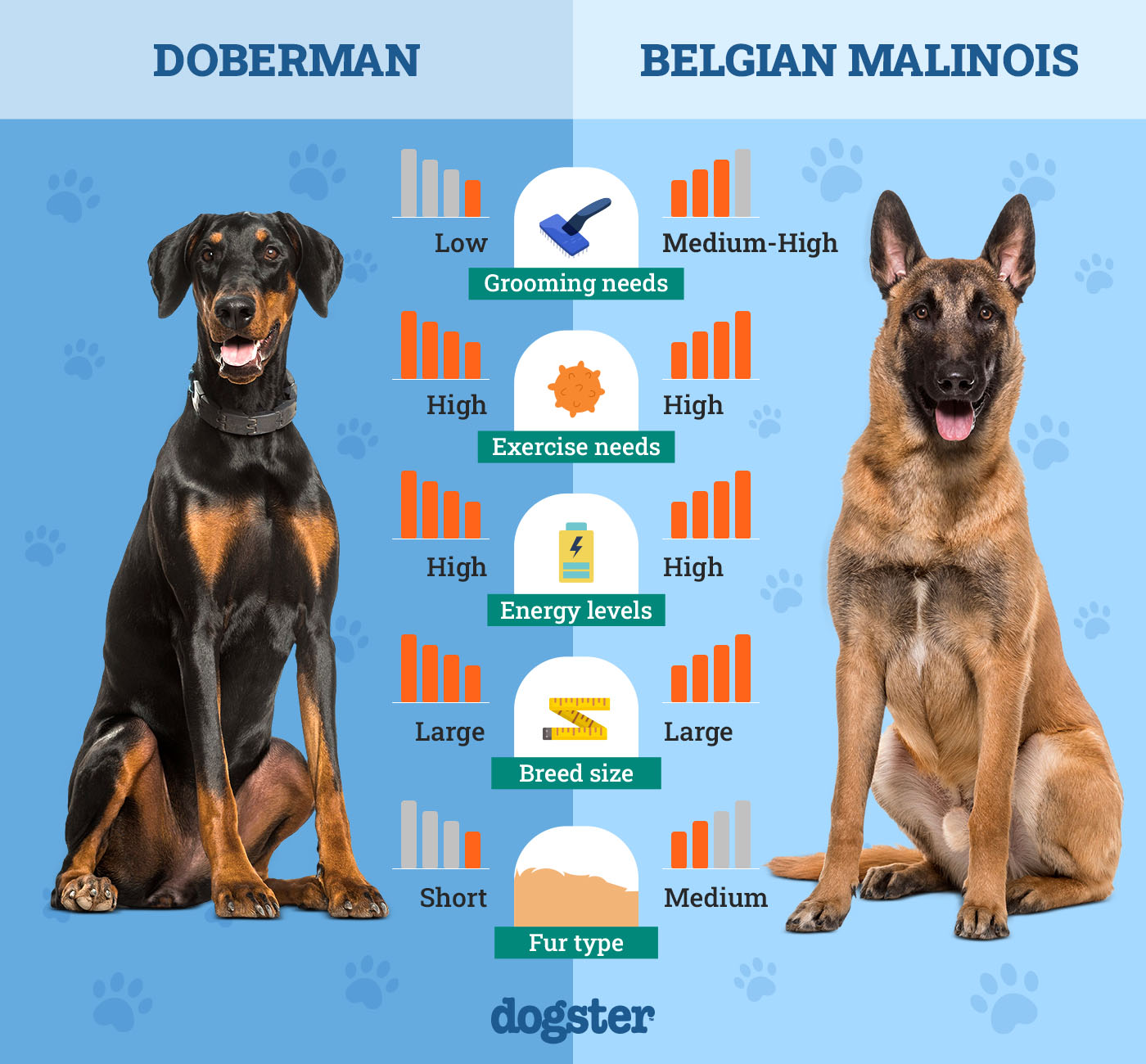
At a Glance
A head-to-head comparison of the Doberman and the Belgian Malinois will help you understand the size, weight, health, and basic characteristics of each dog. As you can see, the Doberman is the larger of the breeds, but when it comes to lifespan, the Malinois has a longer life expectancy. You will also notice that both dogs are family-friendly, intelligent, and easy to train. They are also protective. If you’re looking for a best friend who will also be the protector of your family and home, either breed could easily do the job.
- Average height (adult): 25–28 inches
- Average weight (adult): 75–90 pounds
- Lifespan: 10–13 years
- Exercise: 1+ hours a day
- Grooming needs: Minimal
- Family-friendly: Yes
- Other pet-friendly: Often
- Trainability: Intelligent, loyal, family-oriented, protective, and fearless
- Average height (adult): 22–26 inches
- Average weight (adult): 60–80 pounds
- Lifespan: 12–14 years
- Exercise: 2 hours a day
- Grooming needs: Moderate
- Family-friendly: Yes, but requires proper training
- Other pet-friendly: Occasionally, with proper socialization
- Trainability: Energetic, family-oriented, protective, and intelligent

Doberman Overview
Dobermans are known for being fearless and protective of their owners. This reputation makes sense, considering the breed was initially created to be the protector of a tax collector. Back in the 19th century, collecting taxes was a dangerous job. To avoid running into issues, a tax collector named Louis Dobermann decided to breed a dog that would make people fear it while the dog did its job and kept him safe. It is suspected that Dobermann used the Rottweiler, German Pinscher, and the Black and Tan Terrier to create this breed.
Besides the Doberman’s fearsome appearance, this working-class dog gained a reputation due to their dependability and loyalty. Eventually, Dobermans became involved in police and military service and are even used often as service animals. The breed was first recognized by the American Kennel Club in 1908.
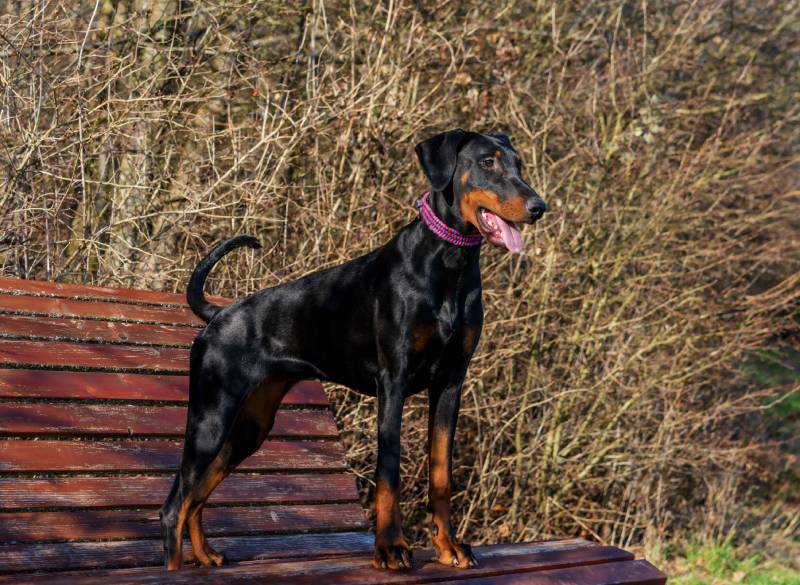
Personality / Character
Described by the AKC as “royalty in the canine kingdom,” the Doberman is best known for their extreme loyalty to their owner and desire to protect their family and home. They can become overly attached to their owners. They are also energetic dogs that need physical and mental stimulation.
You can’t expect a Doberman to sit around on the couch all day; they have to explore and learn. Just because Dobermans are fearless and protective doesn’t mean they can’t be loving. This is especially true when they are properly trained and socialized at an early age. With proper work, a Doberman can get along with other pets being in the home.
Training
The Doberman is a highly intelligent breed. When training is started early, Dobermans can be taught to interact well with strangers, be around children, and be accepting of other pets. When training your Doberman, remember that they are eager to please. Don’t be surprised if your Doberman picks up on things quickly and tries to impress you by showing off just a bit.
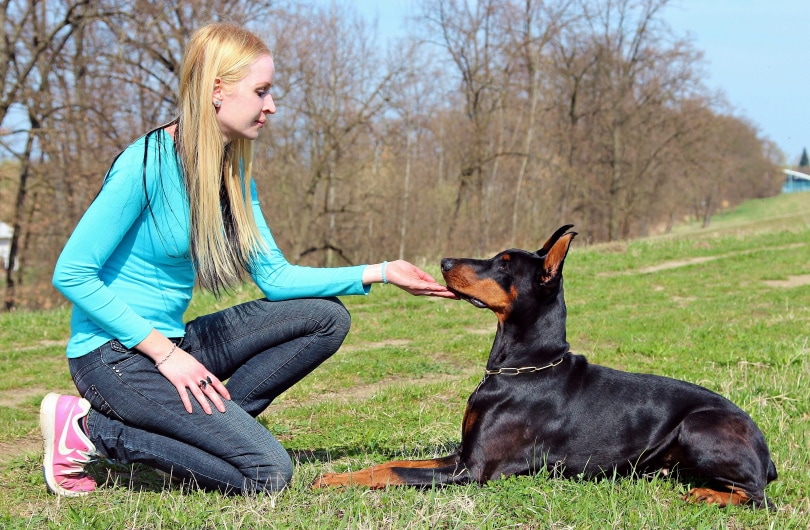
Health & Care
Dobermans are fairly healthy dogs that aren’t high maintenance. They aren’t heavy shedders, usually shedding their coats twice per year. To keep your Doberman looking their best, brush your pet once or twice a week and bathe them as needed. You’ll also need to stay on top of primary care, such as trimming your Doberman’s nails and brushing their teeth with a vet-approved toothbrush and dog-friendly toothpaste. Routine checkups are required for your Dobermans as they are susceptible to a few issues that your veterinarian will need to keep their eyes open for.
Suitable for
The Doberman is genuinely a versatile dog. While they look vicious, they are relatively calm and relaxed, making them good for families and singles. Small children should be introduced to Dobermans early and taught how to properly interact with dogs so that they don’t hurt or scare them. Dobermans require a lot of attention and exercise, however. For elderly dog lovers who want a Doberman, it may be difficult due to their size and activity level.

Belgian Malinois Overview
The Belgian Malinois is a breed that began in Belgium before making its way around the world. Known as herding dogs, the Belgian Malinois was originally used to herd sheep. Their high levels of intelligence and great work ethic made them excel in this position. This breed first came to America in 1911. Before their numbers could truly grow, however, both World War I and World War II commenced. This drastically decreased this breed’s numbers as they were used as wartime animals.
In the 50s, this breed saw an increase in numbers. By 1959, they were officially recognized by the American Kennel Club and classed as a working breed of dog. Like the Doberman, Belgian Malinois are often used as police and military dogs due to their high levels of intelligence and protective natures.
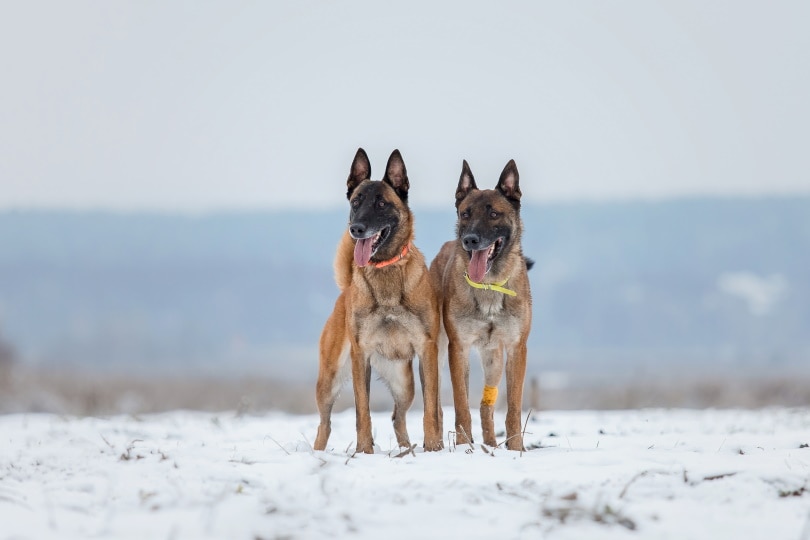
Personality / Character
The Belgian Malinois is an alert, highly intelligent dog that is eager to please their owners. As a working-class dog, they have to stay active. Malinois are responsive to their owners and form strong bonds. They are highly energetic and can spend hours exercising, interacting, or training as their owners see fit. You’ll also find that their attentive nature makes them ideal for the role of a guard dog. A Malinois is known as a protector of their family and is fearless in the face of danger.
Exercise
The Belgian Malinois is not a couch potato. They want to be active, working, or doing something fulfilling. When bringing a Belgian Malinois into your home, you must devote plenty of time to your pet. Malinois prefer burning off their energy with their owners in tow, and long walks or runs are necessary. You’ll also find that playing fetch and other games helps them burn off energy and stay out of trouble.
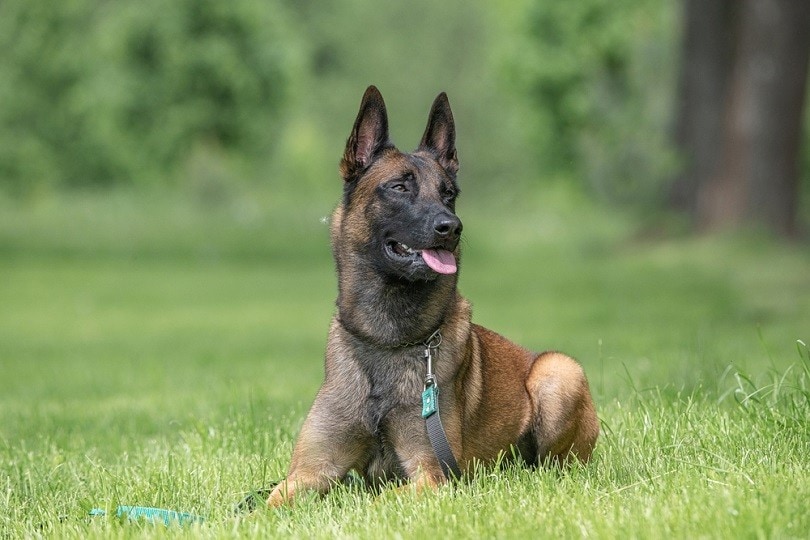
Training
The Belgian Malinois is intelligent, but they can have a stubborn streak. This makes them less suitable for new dog owners who lack the experience to train them properly. When working with your Malinois, praising and rewards are great tools to use. You’ll also find that it is crucial to start early with training and socialization if you plan on exposing your pet to children and other animals.
Health & Care
The Belgian Malinois is considered a healthy breed, but they’re vulnerable to eye conditions. They require more grooming than the Doberman due to their longer, wiry coats. Brushing your Malinois routinely is a great way to keep them looking great. You’ll also need to ensure they receive routine baths, good dental care, and checkups at the vet when needed.
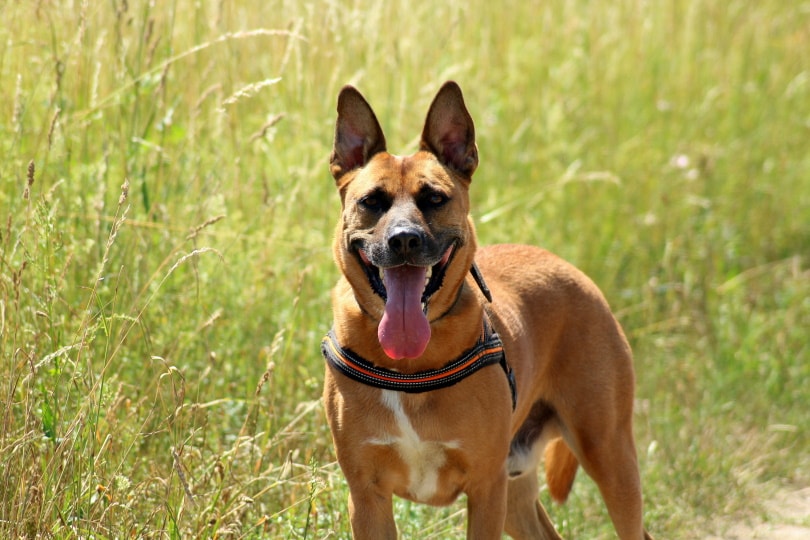
Suitable for:
The Belgian Malinois is an energetic breed that does best when working. Due to this high energy level, they don’t do great in small apartments. Instead, they need an area to run and burn off all that energy. They are good pets for families, but maybe not for families with small children. They could knock the little ones off their feet. Their high prey drive also makes it more difficult for them to be in homes where small animals live.

Which Breed Is Right for You?
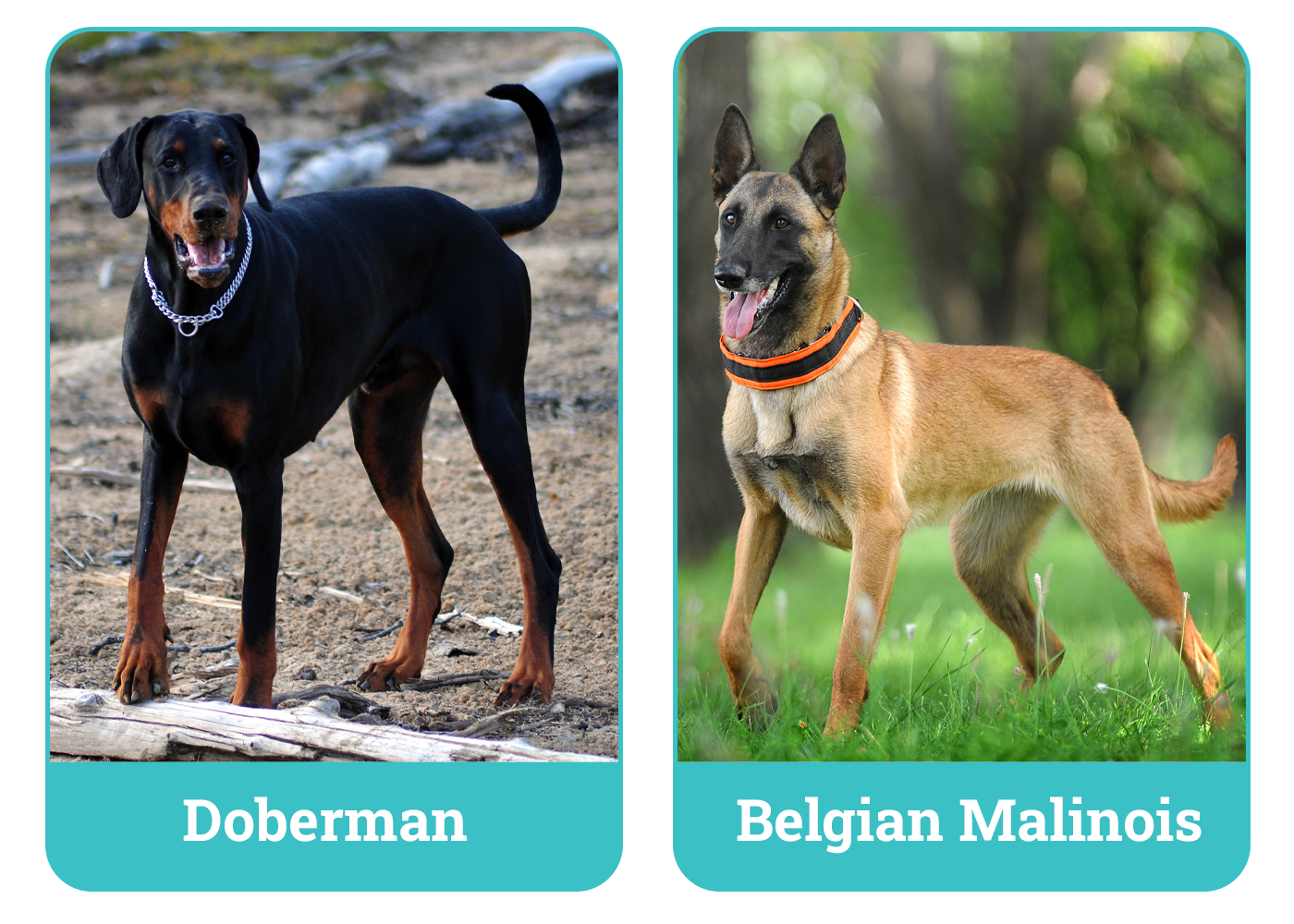
When determining whether the Doberman or Belgian Malinois is the right addition to your home, it’s best to look at your circumstances. The Doberman will be the superior choice if you’re new to the dog world. They are easy to train and form strong bonds with their owners. If you want a dog that will protect your home and go on long runs with you every day, the Belgian Malinois may be ideal. Either breed you choose will make an excellent addition to your home. You should choose the dog you feel fits into your lifestyle best.
Related Reads:
- Belgian Malinois vs. Pitbull: Notable Differences (With Pictures)
- Belgian Tervuren vs Malinois: Differences Explained (With Pictures)
Featured Image Credit: Dogster/Shutterstock


